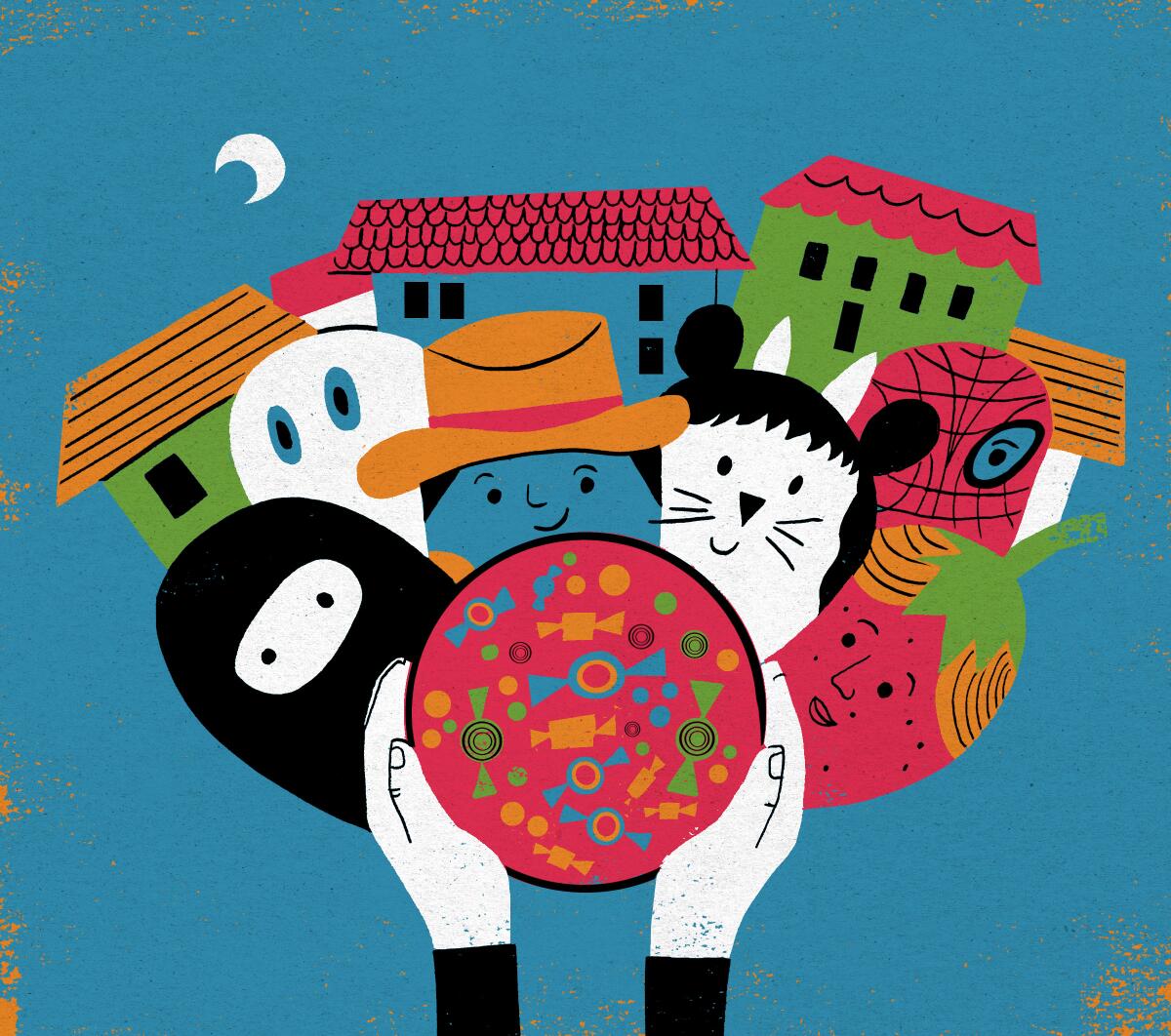My El Monte Halloweens

- Share via
When I was a boy, we didn’t celebrate Halloween. I recall trick-or-treating once, the year I was 5, my mother taking my sister and me to our nana’s house in South El Monte, me in a cowboy costume, my caramel-colored corduroy vest and chaps fresh from my mother’s sewing machine, my sister’s ladybug costume too. We approached a few houses to collect whatever candy we could, and aside from a future Halloween party or two and our elementary school’s costume parade, that was it.
My father experienced most holidays through the advertised supermarket specials where he worked, and he hated Halloween, hated the idea of spending good money on candy that would be given away, and to begging strangers on top of that. This was just before the start of the 1980s and the advent of slasher films, hysteria about razor blades in apples, and hospitals starting to offer X-ray services before children took their candy home. But my father’s despising of Halloween wasn’t about potential danger, or being cheap, or his kids overdoing it with sugar. More than anything, he loathed the notion that things could be gotten for free. To him, everything came at a price. At some point, he became determined to teach us this.
Every Halloween, he would disconnect the doorbell’s wires, tape butcher paper over the side window beside the front door, and block the door with his pick-up truck, the bumper so close to the house that to squeeze ourselves outside we’d have to step through my mother’s gardenias. Because our bedroom windows faced the street, they had to stay dark. My mother, a woman who picked her battles carefully, would turn on the kitchen light, the only other light allowed besides the television. The TV’s volume would be low, our family hidden from the outside world. Night would fall and I would try to ignore the other children racing with excitement past our house.
In later years, I’d dress up with waning interest, any costume seeming foreign and silly and childish. As an adult, Halloween became something I experienced from a detached emotional distance and with a certain degree of dread, the way one might stand at the edge of a packed dance floor to admire everyone’s moves, held back by two left feet.
Now my wife and I live on the north side of El Monte, in a neighborhood that my 10-year-old self imagined as home to wealthy folks, but that simply turned out to be where most of El Monte’s remaining white people lived. The neighbors to our left are emblematic of the city 30 years ago: Mexican American, their son the first to finish college, his mother a lifelong Dodger fan whose shouts alert me to how the team is doing.
A more current El Monte is represented by the neighbors to our right: an immigrant Chinese couple, a doctor and a civil engineer, busy professionals who live with the doctor’s parents. The lawn has been left to the weeds, its centerpiece an Asian citrus tree that produces curious, bulb-like fruit. Daily, the doctor’s mother catalogs them with taped-on numbers.
The neighborhood we share comes with a legacy of trick-or-treaters. In decades past, it was a neighborhood where carloads of kids came because every house gave out candy. This remains mostly true. While some of the neighborhood’s newer neighbors decide what Halloween means to them, the streets here still hold generations of giddy memories, and there are still plenty of lit porch lights and jack-o’-lanterns to guide the way.
It wasn’t until my wife was expecting our son that we actually stayed home and passed out candy. That first time was the night that I came to understand firsthand that to welcome trick-or-treaters is to offer neighborly generosities, one by one, in bite-size form. In the children’s joy, in their bashfulness, in their pride at dressing as a favorite superhero, and in the thank-you’s from their parents, I began to see Halloween as a taking down of the figurative and literal fences that otherwise separate us. Even if this is just for a few hours, and is punctuated by the occasional chainsaw sound effect or spray of fake blood, it is still a glimpse of a place where our humanity is recognized and shared.
My childhood Halloweens had kept me from these connections, and at night’s end, I felt happily bewildered by something so basic to everyone else. As we gathered our party chairs and tidied the porch, I felt that something inside me had unlocked. When I tried to explain it to my brother-in-law, he smiled, then encapsulated it best. “You’re participating,” he said.
This year I’m expecting to see kids in the usual store-bought outfits, as well as some re-purposed El Monte Jets or Little League uniforms. They’ll arrive with plastic jack-o’-lantern buckets, with pillowcases, with plastic shopping bags from Superior or Green Farm Market. There will be mildly embarrassed teenagers, ones about to age out of this part of the tradition, with a mask in their hands instead of over their face. There will be the vicarious parents pushing strollers with barely costumed babies. There will be the sink-or-swim parents that will wait at the curb as their children cautiously approach. And there will be us — my wife, our young son and me — waiting by our door with a bowl of candy, ready to greet them all.
Michael Jaime-Becerra is an associate professor of creative writing at UC Riverside and author of “Every Night Is Ladies’ Night.”
More to Read
A cure for the common opinion
Get thought-provoking perspectives with our weekly newsletter.
You may occasionally receive promotional content from the Los Angeles Times.









